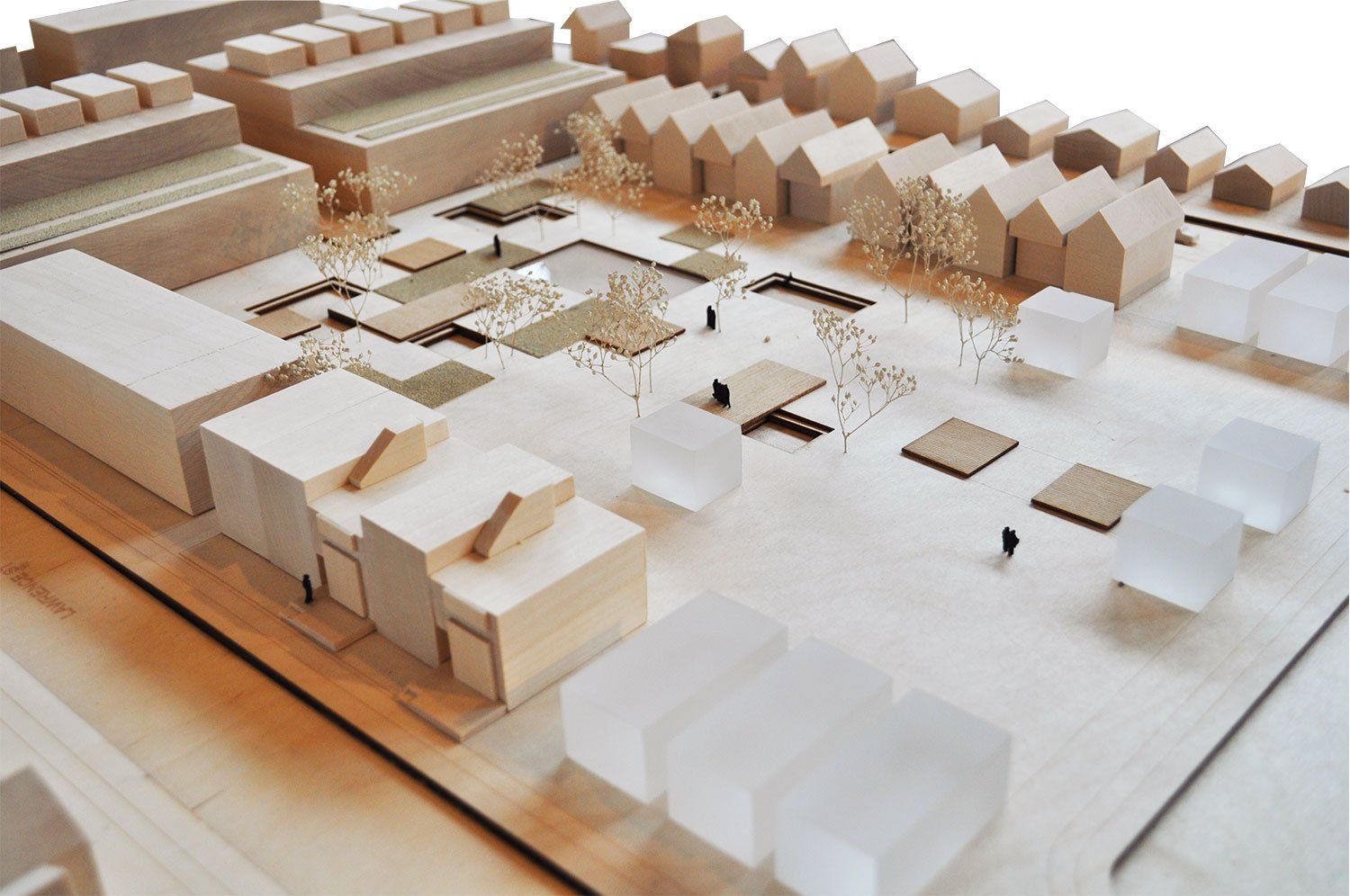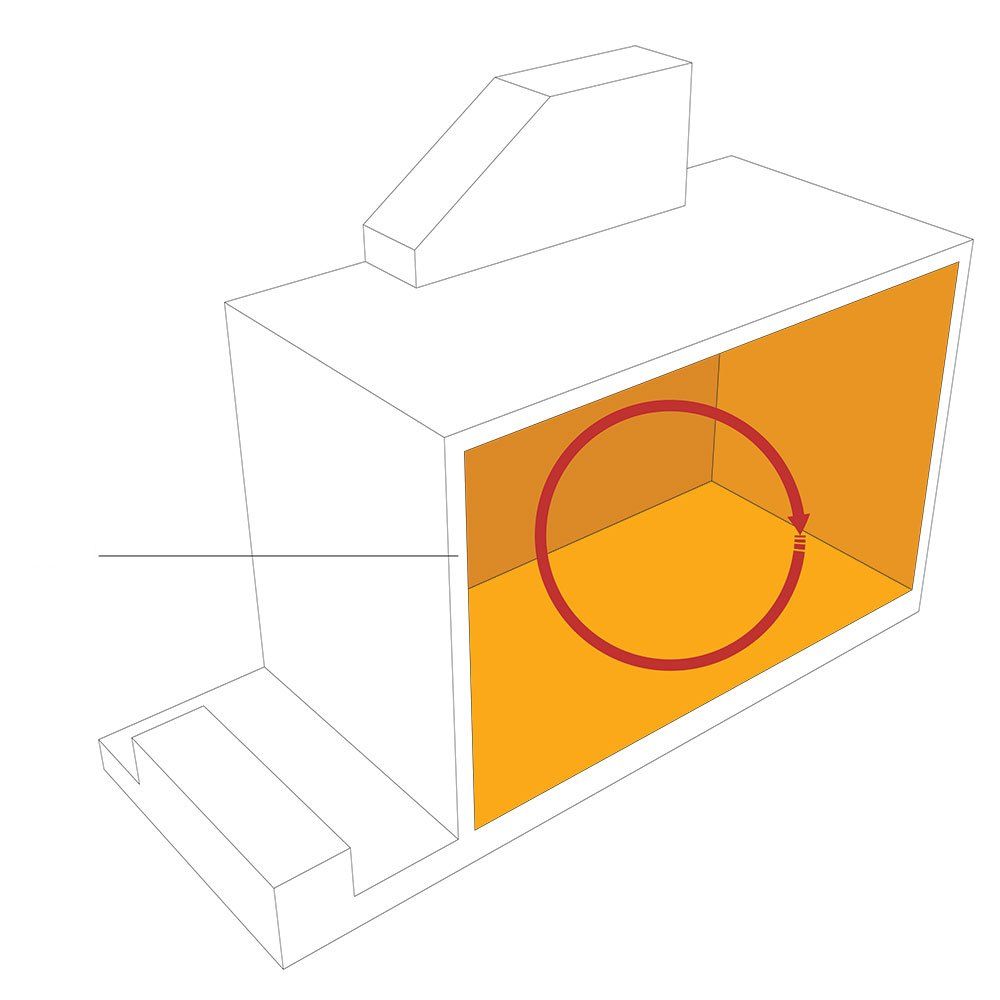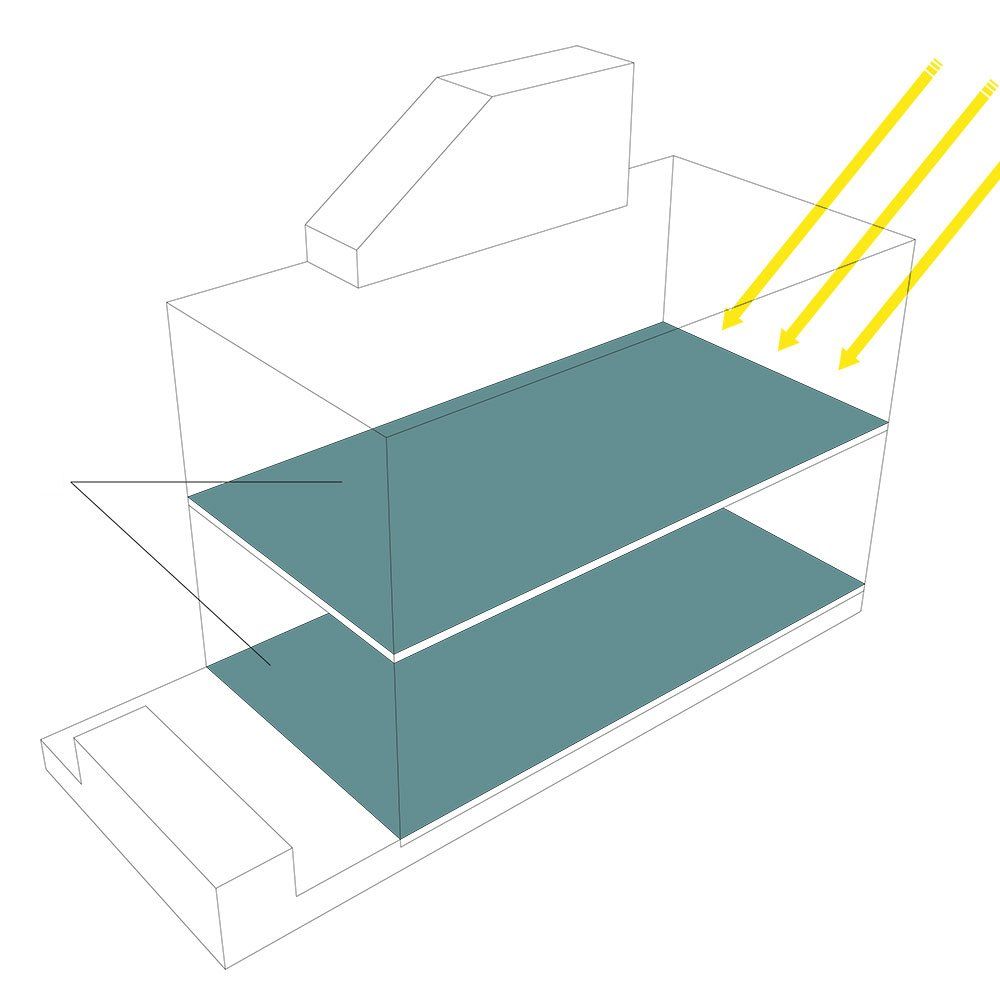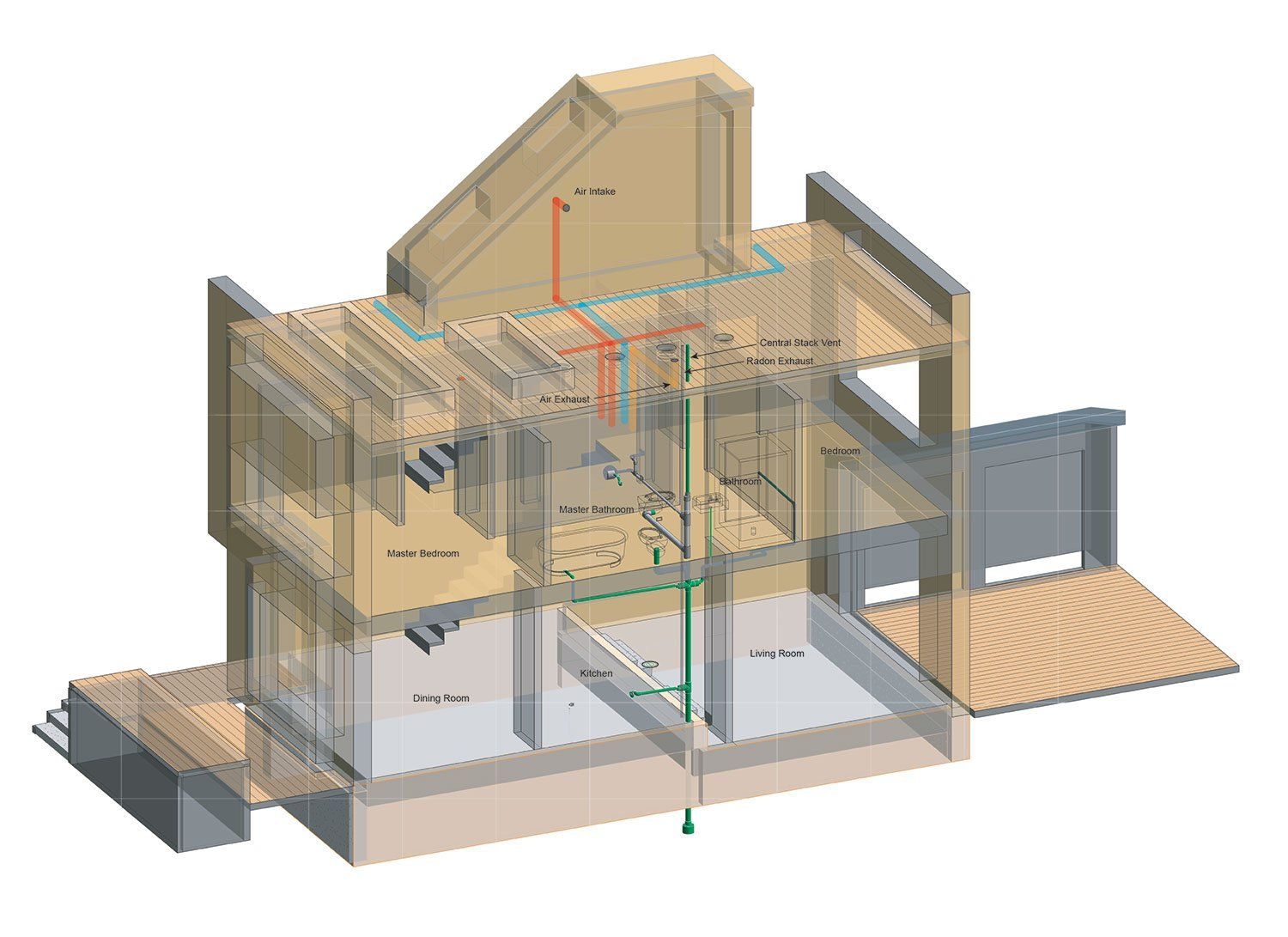[X:14] Denver Passive House
The [X:14] Denver Passive House was conceived as a collaborative effort to re-imagine the affordable housing typology. During the course of this process the underlying principles of how we live and the types of spaces we need to accommodate these desires were examined. The design group wanted to challenge the contemporary notion that quantity of space supersedes quality of space and design clarity. The aim of [X:14] is to provide a high quality of living within an optimized, small footprint that is sensitive to both the inhabitants of the building and the local, as well as global environment.
The design of [X:14] is the synthesis of both modern technology and vernacular principles. Unlike traditional buildings in the modern age, [X:14] utilizes what is immediately available from its specific location’s environment as the primary energy sources; it supplements only what cannot be generated onsite to meet modern standards of comfort through technological means. Traditional ideas of orientation, passive energy design, thermal massing and aspects of daylighting are key elements in the outward expression of the house’s massing. This strategy creates not only a more energy efficient building, it also creates a building with a high survivability factor, all without increased capital investment.
Master Plan
The master plan for the [X:14] project, which includes both blocks of the Denver Sustainability Park, is designed to maximize open space and walkability, creating a sense of community with an emphasis on sustainability. While the urban edge is maintained at the parameter of the development, interior spaces are organized as a gradient of more private spaces adjoining the residences and public amenities and gardens at the core. Existing community gardens are expanded and necessary services have been added to enhance livability. The overall aim of the plan is to incorporate requisite modern services with minimal impact, both environmentally and visually, to create a self-sustaining neighborhood within the urban fabric.
The area presented is a mixed-use development containing a combination of row house, single-family housing and commercial development spaces surrounding park and garden spaces. To ensure connection to the surrounding city, centralized walking passages have been developed with access to existing public transit lines, promoting multiple modes of transportation including walking, biking and transit. Since automobiles are necessary for certain activities, parking for the community is provided by two structures with automated lifts allowing for a greater number of vehicles to be stored in a minimized footprint.
Commercial spaces located at the northeastern edge of the parcel provide goods and services for the immediate community as well as space for local business development. These spaces are intended to create day and night time activation of the area, attracting people from the immediate and surrounding areas and creating a sense of vitality. This development allows for the incorporation of needed amenities essential to sophisticated urban residents.
At the heart of this master plan is a central green space that augments the highly successful community garden established by the city. New green houses have been created to extend both the viability of this endeavor as well as the variety of products that can be produced. To promote the organic nature of these gardens a number of environmentally friendly solutions have been incorporated into the design. These include a water catchment system for the surrounding structures and a grey water recycling cistern that work to capture normally wasted site resources. Additionally, organic household waste collection sites have been included for the production of organic compost. Together, these systems allow for the production of healthy, environmentally sensitive produce with minimal impact on city resources.
This central garden space also provides high quality spaces for the residents of the neighborhood. A series of outdoor patios, playgrounds and playing fields create a safe place for individuals to come together and interact. Parents have the peace of mind that their children have a safe place to play and explore while adults have an area of common ground where they can come together as a community. This area promotes indoor and outdoor living by softening the barrier between the two.
This proposed master plan looks to provide for the needs of the community at a variety of levels. The careful coordination of various aspects of living allows for a place that people can have their needs provided for in a localized environment without the normal dependence on automobiles. By offering numerous modes of engagement, people are free to choose activities concurrent with their lifestyle and level of interaction, promoting a sense of community and connection not typically encountered in modern development.
Resilience and Sustainability
[X:14] is designed to the strict German Passive House standard, allowing the home to consume approximately 85 percent less energy per annum then a typical code standard home in the same location. This is achieved through a highly insulated and extremely airtight enclosure, which is constructed of 8 1/2" Structurally Insulated Panels (SIPs) that are infused with graphite. The high R-value insulation extends into the triple pane, argon filled window units that help retain the building’s heat or cold, depending on the specific season. Window sizing and orientation have been precisely designed to capture and retain the sun’s energy in the winter months and block unwanted heat gain in the summer. This thermal sealing of the house allows for greatly reduced mechanical systems and energy consumption within the unit. The active systems for heating consisting only of a 95% efficient condensing natural gas on-demand hot water heater, which provides both hot water needed for the radiant heating system as well as domestic hot water in separated loops. An Energy Recovery Ventilator (ERV) is installed to provide extremely high indoor air quality, at the same time reducing overall heat losses by conditioning the incoming air with the heat of outgoing air. The open staircase, in tandem with operable skylights in the stair hood on the rooftop and an operable window behind the wooden façade screen to the north, provide natural nighttime ventilation during the warm summer months, to reduce AC equipment sizing as well as loads. For visual comfort and backup heating, the design team proposes a direct-vent natural gas fireplace that is located in the center of the open main floor, to act as a place to gather around.
[X:14]’s floor plan is intended to create an ease of movement and sense of place within the house by reducing the number of interior walls. The main level of the house has an open space configuration, which is outlined into separate zones through the use of circulation paths and ceiling heights. This sense of space is further augmented with the incorporation of outdoor spaces on the first floor and the roof terrace, which provide different levels of privacy: the building’s patio, slightly above street level, allows for open communication with the neighbors and full engagement with the street. The garden is already intended for more private use, but can embrace the community by opening up the garden gates into the block’s central core. The rooftop deck is intended for private use, offering astonishing views into Denver downtown. The second level of the house offers the occupants juxtaposition, with private spaces for solace and retreat.
While the house may appear simple to the outside observer, the design and layout of the house are orchestrated to maximize natural energy sources. Window sizing, placement and construction are the direct results of solar energy harvest potential. Once inside of the structure, energy is stored in the thermal mass of the concrete floors for even distribution throughout the day. The air tightness of less that 0.6 ACH50 of the building ensures that energy gains made during the day are retained in the house but also allows for normally wasted energy gains; those from lighting, mechanical systems and the occupants, to be used to lower the mechanical demands.
Awards
2014 U.S. Department of Energy Challenge Home Student Design Competition for best Construction Documents
Project Blackboard
Design: Fall 2013
Individual Building size: approx. 1,100 SF
Individual Lot size: 1,200 SF
Direct construction cost goal: $150,000 per unit
Designed to Passive House Standard
Architecture and Energy Performance Simulation Student Team:
Ashley Iordanov, Patrick Ramstack, Milad Seffiddashti, Massih Nilforoushan, Rosemary Shkembi, Minh Tang, Xiomara Salazar, Nirman Rajbhandari, Etinosa Obazee, Anna Barmina, Eden Luna, Zahra Hassanipour and Matthew Duncan
Instructor: Jörg Rügemer
Client: Denver Housing Authority
Photo credits: Student Team, Jörg Rügemer
Exhibition of the final projects at the Denver Housing Authority Art Exhibit, January 2014.










